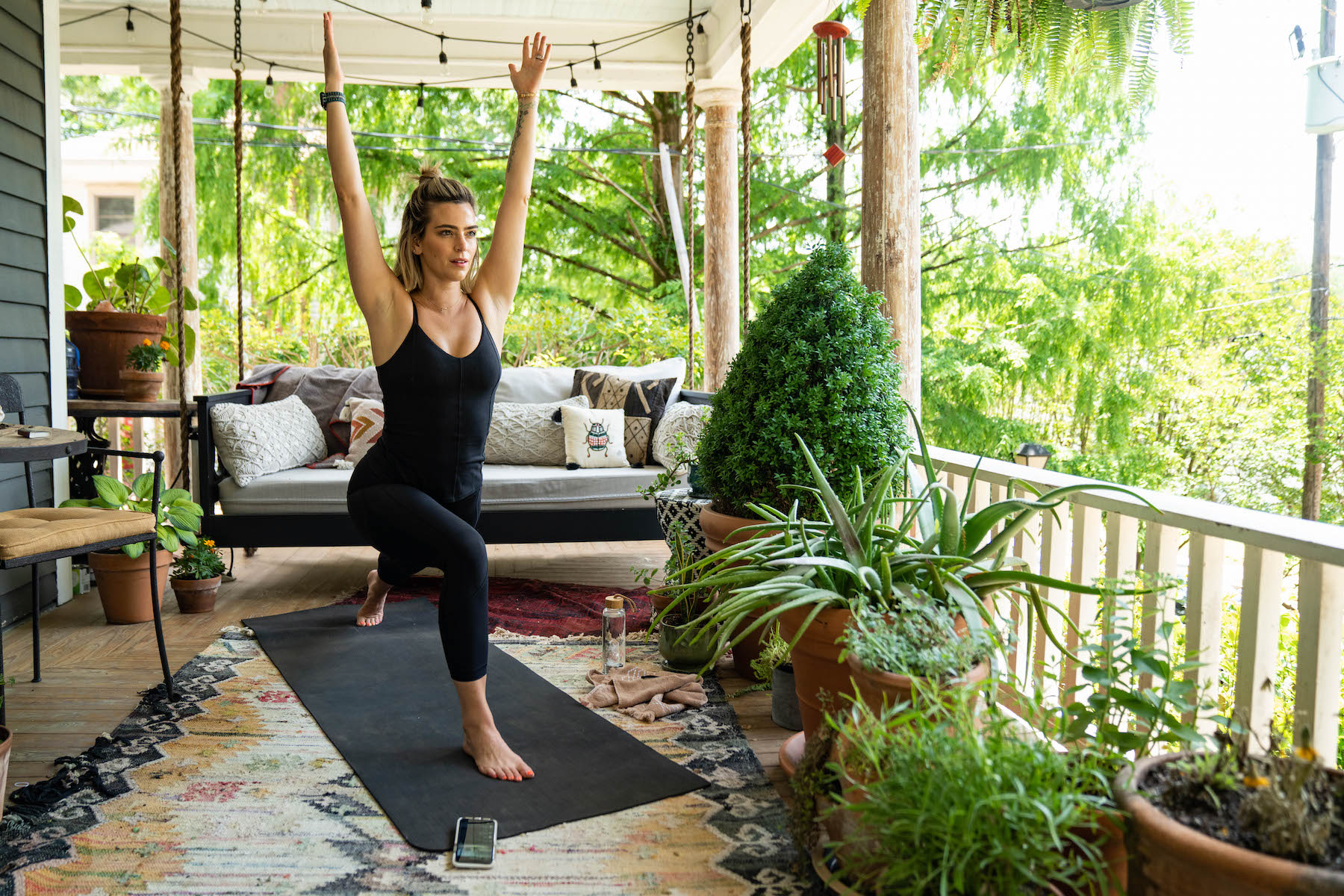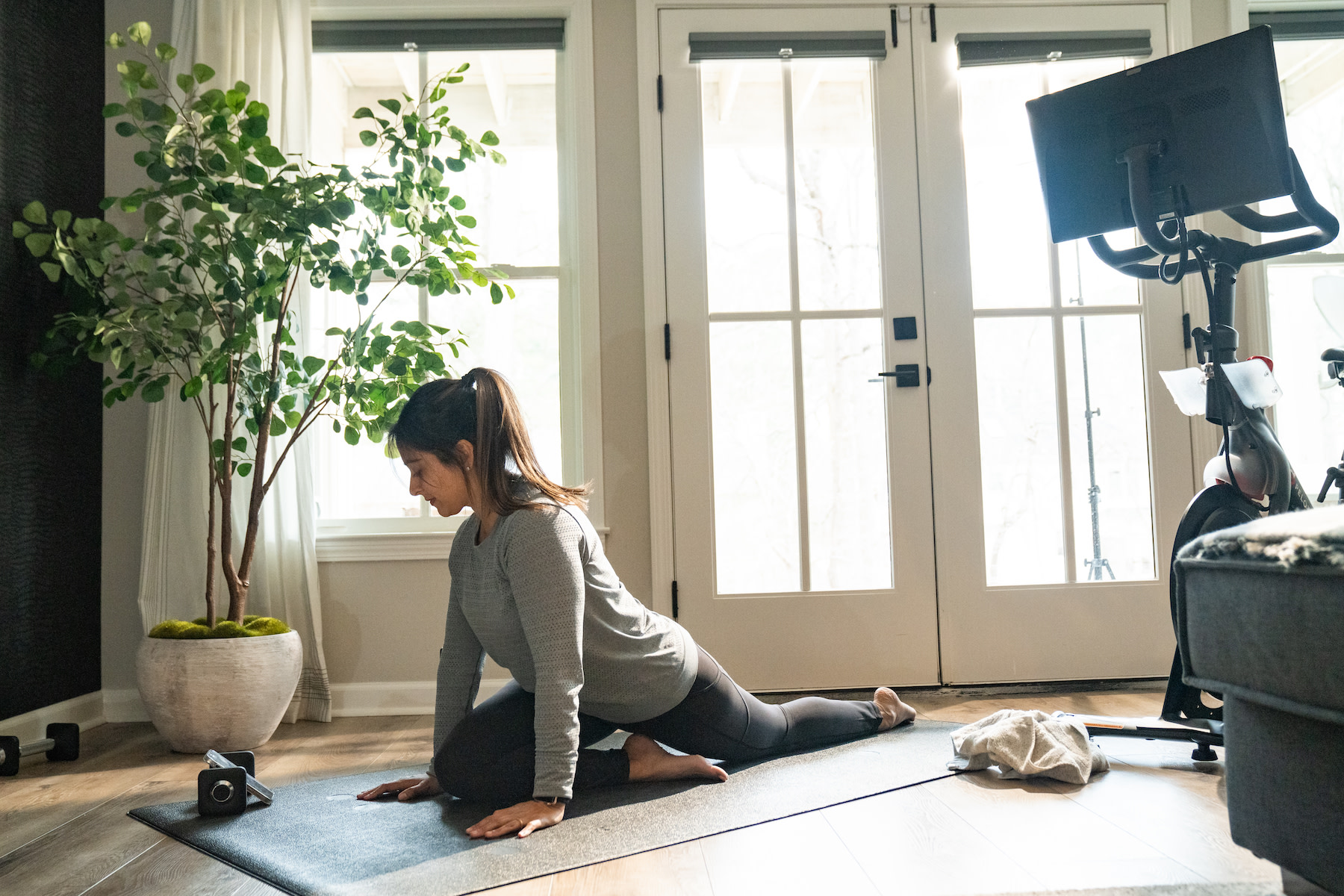
The Best Active Recovery Workouts, Based on Your Fitness Routine
Find out the best forms of movement for the days when you’re not going all-out.
By Emily Laurence•
What Is Active Recovery and What Are the Benefits?
When Should You Do Active Recovery Workouts?
Active Recovery Examples for Different Workouts
Even though the endorphin rush from an intense workout feels amazing, it’s not a good idea to go hard every day—this is where active recovery workouts come in. If you do go hard every day, your body won’t be able to recover and you risk getting injured and not being able to work out at all. To recover properly, the body needs complete rest (known as passive recovery) as well as light physical movement (aka active recovery).
Sleep, vegging out in front of the TV, and spending time in a sauna are all forms of passive recovery—essentially anything where you aren’t moving a whole lot. Active recovery is a little tricker to grasp. How do you move your body while allowing it to recover at the same time? It’s all explained here, along with active recovery workout ideas no matter what your regular go-to workout is.
What Is Active Recovery and What Are the Benefits?
Active recovery is low-intensity exercise. “Oftentimes when we think of recovery from a workout, we think only of complete rest. However, while complete rest is beneficial for deep recovery, a more active approach can often help us recover more quickly and keep us training at the same time,” says Peloton instructor Matt Wilpers. With active recovery, you’re still moving your body, but it isn’t requiring as much effort as a traditional workout. There are three major benefits of active recovery, which are explained below:
Improved blood circulation
Matt points out that gentle movement keeps your blood flowing more that complete rest. Blood flow delivers oxygen and nutrients throughout the body and other waste products are removed, which helps muscles to recover faster.
Reducing post-workout stiffness
Ever do an intense workout, spend the rest of the day plopped on the couch, and then find it hard to even walk the next day? Matt says that active recovery can help reduce that post-workout stiffness and soreness.
Accelerated recovery
Scientific research shows that active recovery can actually help you recover from an intense workout faster than passive recovery alone.
When Should You Do Active Recovery Workouts?
There are a couple of different ways active recovery can be integrated into your workout routine. Matt says that one time is right after a big workout, like a race or sporting event. Scientific research backs up that it can be beneficial to do an active recovery workout after a race. In one small study from the American Council on Exercise and Western State Colorado University, one group did an active recovery workout after an intense run or cycling session while the other group focused on passive recovery. The active recovery group was able to run or cycle three times longer the second time around, versus the passive recovery group.
The other time Matt says that active recovery workouts should be done is on “in between days.” “These are days in between more intense workouts where you are not so sore that you need complete rest. However, you do need to keep it easy so that you are ready for the next challenging workout,” he says.
How Often Do You Need Active Recovery?
It bears repeating that the body can’t fully recover only with active recovery; it needs complete rest too. With this in mind, it can be tricky to figure out how often you need to prioritize active recovery. “Active recovery days must be balanced with complete rest days and it's important to note that balance differs from person to person,” Wilpers says. The key, he says, is to listen to your body. He adds that getting advice from a personal trainer or coach can help you figure out how much active recovery you need too.
Matt says that there are also a few signs that your body absolutely is in need of some love in the form of active recovery. This includes residual muscular stiffness, soreness, and fatigue from a previous workout. He adds that it’s also important to pay attention to your level of fatigue. “There is a line between when complete rest is needed versus active recovery and that is usually determined by the level of fatigue. When you're deeply fatigued, complete rest may be needed,” he says.
The Different Types of Active Recovery
Just like there are different types of workouts, there are also different types of ways to engage in active recovery. Below are the different types of active recovery:
Walking or light jogging: Unlike during an intense run, you should be easily able to carry on a conversation during an active recovery walk or light jog. It should feel easy.
Easy biking or cycling: Not every session on a bike has to be done at full-speed or with the resistance turned all the way up. Indoor or outdoor biking can serve as active recovery as long as it isn’t strenuous.
Swimming: Matt says that swimming can also be a form of active recovery. This is because it’s a way of moving the body without putting strain on any muscles, bones, or joints.
Restorative yoga: Restorative yoga is a gentle form of yoga that incorporates periods of rest. It’s a way to move the body without putting any strain on it.
Tai chi: A Chinese martial arts practice, tai chi involves slow, intentional movements and controlled breathing. Similarly to restorative yoga, it allows the body to move in a way that’s gentle, not strenuous.
Active stretching: Active stretching involves moving the limbs through their full range of motion several times. This can help relieve tension in the body while promoting blood flow.
How Long Should Your Active Recovery Workouts Be?
As with any type of workout, when it comes to how long your active recovery workouts should be, it’s important to listen to your body. Again, these types of workouts shouldn’t be strenuous. They should make your body feel better and not worse.
If you’re doing an active recovery workout immediately after a more strenuous workout, aim for 20 minutes involving the same muscles that were used during the prior workout. This, research shows, is more effective in aiding recovery, than engaging in active recovery that uses different muscles than the ones used during the workout. If that feels super long, even just six to 10 minutes of active recovery after a workout has been found to be effective.

Active Recovery Examples for Different Workouts
Finding the type of active recovery that’s the best fit for you depends on how you typically work out and what you enjoy doing the most. Here is some guidance on active recovery workouts to try whether your go-to workout is biking, running, strength-training, or rowing.
Active Recovery for Biking
If you love intense classes on your Peloton Bike or like going for long bike rides in nature, Matt says you can also use your bike to recover. Again, what’s important is how much effort you’re having to put into your workout—which, in this case, should be a lot less than your typical ride.
Matt adds that it can also be beneficial to combine an easy ride with another form of movement. “An active recovery workout for a cyclist is typically a very easy ride with higher cadence and lower resistance followed by stretching or yoga,” he says. “Similar to active recovery in other forms of exercise, the goal is to promote blood flow and recovery versus overload and fatigue.” He adds that swimming is another great active recovery workout for bikers.
Interestingly, Matt says that while runners often use cycling for active recovery, cyclists would not often choose running for active recovery due to the impact that running has on their legs. In general, Matt says to focus on a low impact form of exercise, not a high impact exercise that will make your muscles feel even more sore.
Active Recovery for Running
Prefer running to cycling? Matt suggests going for a walk or light jog as a form of active recovery. He says that the focus should be on feeling more energized when you’re done, as opposed to a training run where you feel fatigued at the end of it. “[An active recovery jog or walk] is different from a normal training run where the goal is to overload the working muscles in order to improve fitness at the cost of higher levels of fatigue and reduced energy,” Matt says.
Matt says that runners can do an active recovery workout in the form of something completely different from jogging or walking too. “For example, a low impact form of exercise like cycling, swimming, or yoga also works,” he says. He adds that biking or cycling with high cadence and low resistance is great for promoting recovery while reducing impact on the muscles and joints. “The key is moving the body while keeping the intensity light in order to promote blood flow and recovery versus overload and fatigue,” he says.
Active Recovery for Strength Training
Maybe cardio isn’t the type of workout you do regularly and you’re more into strength training. How can you help your body recover? Wilpers says to go for an activity that is light and focuses on promoting blood flow and recovery—not something that is going to make you feel more fatigued or puts more strain on your muscles. For example, light cardio (like walking, jogging, or an easy bike ride), swimming, and yoga are all great active recovery workouts for people who strength train regularly. Matt says that light resistance band work can be a great option too.
Active Recovery for Row Workouts
“An active recovery for someone focusing on rowing would be something that is light, focuses on promoting blood flow, and recovery versus overload and fatigue,” Matt says. Sound familiar? It should—just like with strength training, active recovery, you especially want to avoid putting strain on your muscles if you’re a rower when you’re doing an active recovery workout.
Matt says that light, low-impact cardio (like walking or jogging), cycling (as long as it’s easy), swimming, yoga, and active stretching are all great reactive recovery workouts for people who row regularly.
Remember, active workouts aren’t meant to replace complete, passive rest: Your body needs both. But incorporating active recovery into your routine can help you recover faster so you can keep doing your regular workouts longer and even better than before.

Peloton App
Access thousands of classes with no equipment needed.
This content is for informational and educational purposes only and does not constitute individualized advice. It is not intended to replace professional medical evaluation, diagnosis, or treatment. Seek the advice of your physician for questions you may have regarding your health or a medical condition. If you are having a medical emergency, call your physician or 911 immediately.
Level up your inbox.
Subscribe for a weekly dose of fitness, plus the latest promos, launches, and events.
By providing your email address, you agree to receive marketing communications from Peloton.
For more about how we use your information, see our Privacy Policy.








